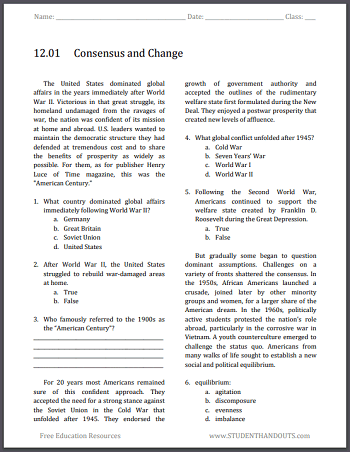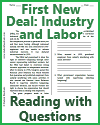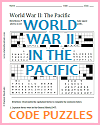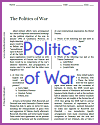| Consensus and Change Reading with Questions |
|---|
| www.studenthandouts.com ↣ American History ↣ American History Readings |
 The United States dominated global affairs in the years immediately after World War II. Victorious in that great struggle, its homeland undamaged from the ravages of war, the nation was confident of its mission at home and abroad. U.S. leaders wanted to maintain the democratic structure they had defended at tremendous cost and to share the benefits of prosperity as widely as possible. For them, as for publisher Henry Luce of Time magazine, this was the "American Century."
The United States dominated global affairs in the years immediately after World War II. Victorious in that great struggle, its homeland undamaged from the ravages of war, the nation was confident of its mission at home and abroad. U.S. leaders wanted to maintain the democratic structure they had defended at tremendous cost and to share the benefits of prosperity as widely as possible. For them, as for publisher Henry Luce of Time magazine, this was the "American Century."1. What country dominated global affairs immediately following World War II? a. Germany b. Great Britain c. Soviet Union d. United States 2. After World War II, the United States struggled to rebuild war-damaged areas at home. a. True b. False 3. Who famously referred to the 1900s as the “American Century”? For 20 years most Americans remained sure of this confident approach. They accepted the need for a strong stance against the Soviet Union in the Cold War that unfolded after 1945. They endorsed the growth of government authority and accepted the outlines of the rudimentary welfare state first formulated during the New Deal. They enjoyed a postwar prosperity that created new levels of affluence. 4. What global conflict unfolded after 1945? a. Cold War b. Seven Years' War c. World War I d. World War II 5. Following the Second World War, Americans continued to support the welfare state created by Franklin D. Roosevelt during the Great Depression. a. True b. False But gradually some began to question dominant assumptions. Challenges on a variety of fronts shattered the consensus. In the 1950s, African Americans launched a crusade, joined later by other minority groups and women, for a larger share of the American dream. In the 1960s, politically active students protested the nation's role abroad, particularly in the corrosive war in Vietnam. A youth counterculture emerged to challenge the status quo. Americans from many walks of life sought to establish a new social and political equilibrium. 6. equilibrium: a. agitation b. discomposure c. evenness d. imbalance Answer Key: 1. D - United States; 2. B - False; 3. Henry Luce; 4. A - Cold War; 5. A - True; 6. C - evenness. Click here to print. |
 |  |  |  |  |  |
| Postwar America Worksheets | Postwar America Learning and Study Games |
| Postwar America Outlines and PowerPoints | Postwar America Maps and Pictures |
| Postwar America Miscellany | Postwar America Books and Films |
| www.studenthandouts.com ↣ American History ↣ American History Readings |








